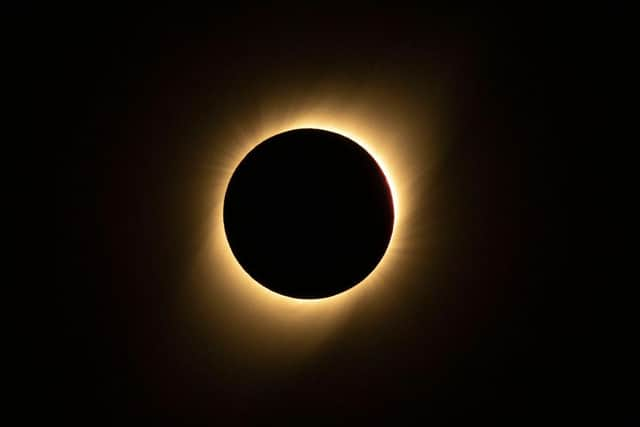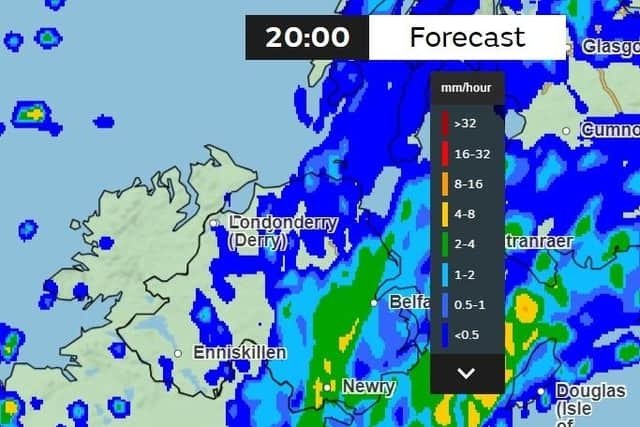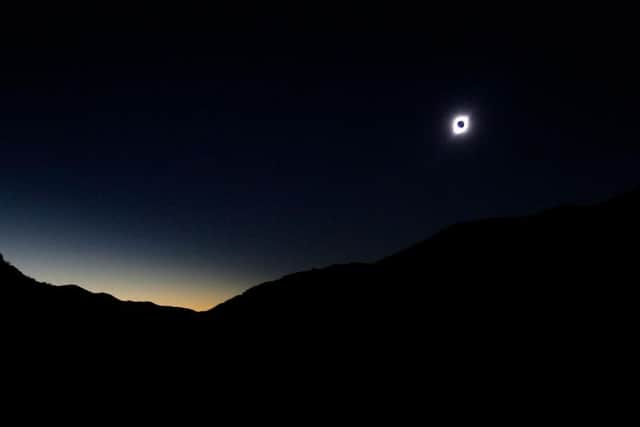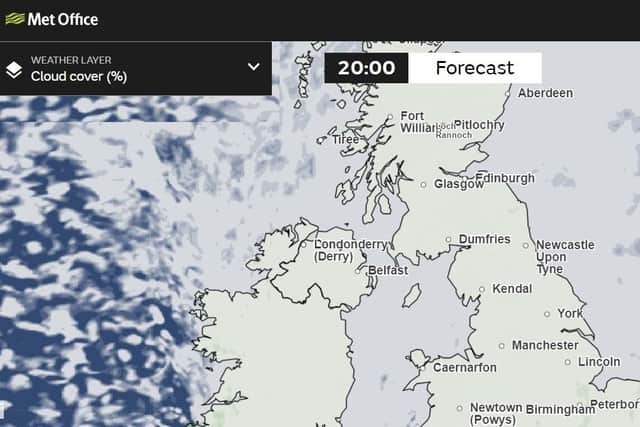Today's solar eclipse will be visible in Northern Ireland (weather permitting) - but how much you see depends where you live
and live on Freeview channel 276
However thanks to the dour weather – and the slim fraction of the sun which will be covered from Ulster’s vantage point – few will get a good glimpse of anything.
The Met Office is predicting the Province as a whole will be overcast at 8pm tonight, with rainfall in the mid and east.
Advertisement
Hide AdAdvertisement
Hide AdHowever, would-be eclipse-gazers need not despair according to Marc Sarzi, Armagh Planetarium’s head of research: there will be a chance to catch a total eclipse in summer 2026, if they are holidaying in Spain or Portugal at the time.


On Monday, people living within a certain narrow belt from north-west Mexico to north-east Canada were able to experience a total eclipse as the moon perfectly blotted out the sun.
According to the BBC’s ‘The Sky At Night’ astronomy website, from 7.55pm tonight the eclipse will begin appearing to those living on the island of Ireland.
In the far west of Ireland – including the extreme west of Donegal and the Connemara – the eclipse will peak at perhaps only one-quarter of the sun (perhaps less, estimates vary depending where you are) at roughly 8.24pm.
Advertisement
Hide AdAdvertisement
Hide AdIn a band further east, from Londonderry and west Tyrone to mid-Co Down, there will be a slightly lower level of eclipse, peaking at 8.13pm.


And in the far east coast – including Belfast – there will be a slightly smaller level again, peaking at 8.08pm.
Mr Sarzi said that eclipses, even total ones, are really not very rare events, and happen perhaps every year-and-a-half in various places across the Earth.
But many of these are virtually uninhabited (like Antarctica or the Pacific Ocean), and being within the narrow band of shadow that a full eclipse brings happens only once every 360 years or so for every spot on Earth, he added.


Advertisement
Hide AdAdvertisement
Hide AdThe next eclipse which is predicted to be visible from Northern Ireland will not be until March 29, 2025, though it will be only a partial one.
However Earth is due to see another full eclipse until August 12, 2026, when the Iberian Peninsula is going to be the best nearby spot to see it, so “this one in 2026 is one to hope for” said Mr Sarzi: “You just have to catch a flight.”
He also told the News Letter that the difference between a partial and full eclipse is incredibly stark.
"A partial eclipse, even if it covered 90%, you don’t see a noticeable difference,” he said.


"The sun is just too bright.”
A total eclipse though is like night-time during the day.
Advertisement
Hide AdAdvertisement
Hide AdMr Sarzi reflected on the fact it is a “strange co-incidence” that the moon happens to be almost identically-sized in our field of vision as the sun, without which a total eclipse wouldn’t be possible.
We are fortunate too that human life emerged when it did, allowing us to see such a spectacle.
"The moon is moving away from us continually; millions of years ago the moon was closer,” and so – for the dinosaurs – total eclipses would have been much more frequent.
And by the same token, “in a few million years there won’t be any total eclipses anymore,” he added.
Advertisement
Hide AdAdvertisement
Hide AdHe added that, besides the educational and entertainment activities the planetarium offers, the staff do a lot of detailed research into the physics of the sun, with the help of the Dublin Institute for Advanced Studies.
Comment Guidelines
National World encourages reader discussion on our stories. User feedback, insights and back-and-forth exchanges add a rich layer of context to reporting. Please review our Community Guidelines before commenting.